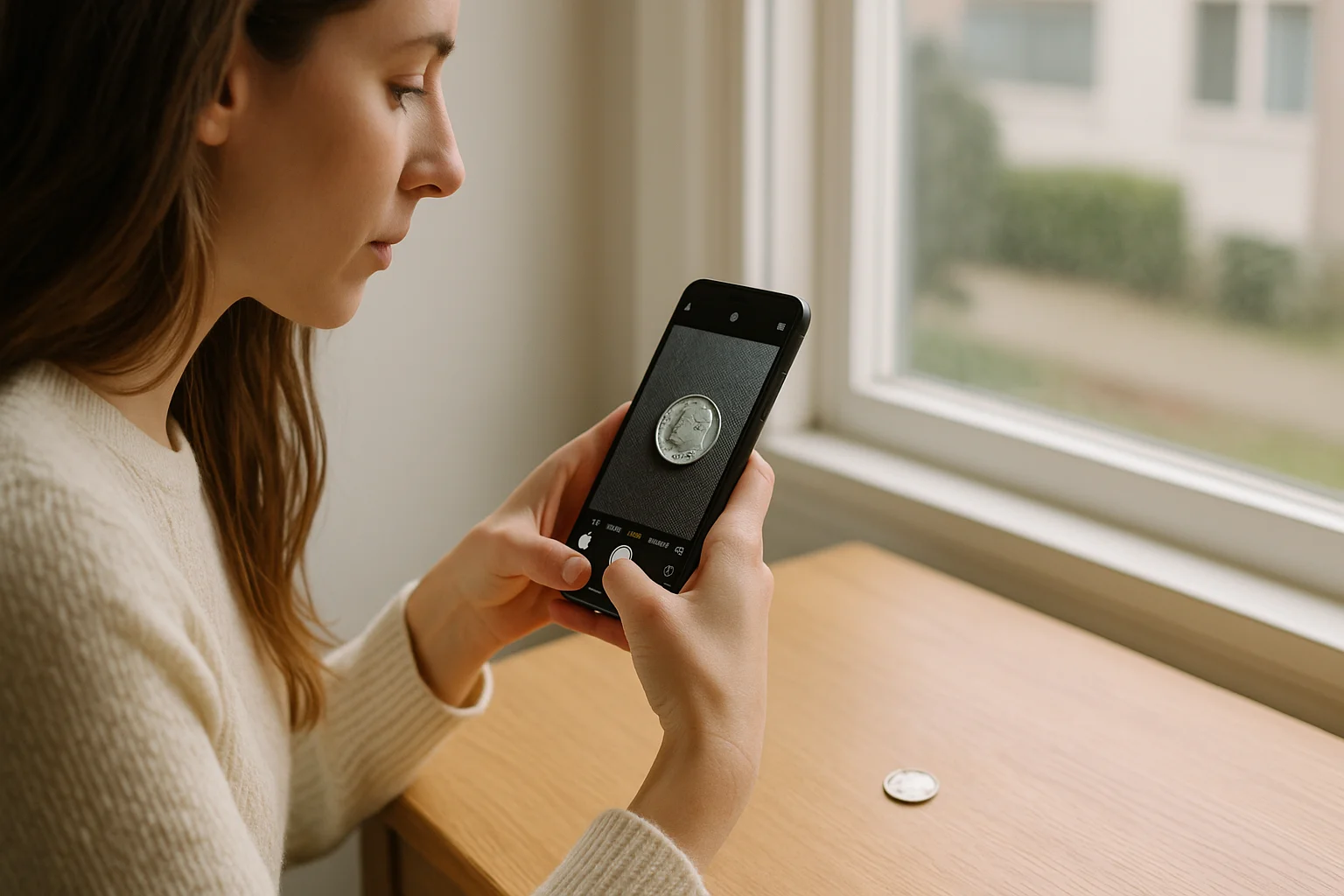How much is a silver dime worth? Well, this question comes up constantly, whether you are just starting out or have been collecting for years. The answer isn’t simple: silver dimes hold interest because they contain precious metal but also because they are pieces of American history you can hold in your hand.
So, right now we offer you to explore what makes silver dimes special, why collectors chase them, and what really drives their value. By the end, you’ll see that their worth lies not only in ounces of silver but also in rarity, condition, and the fascinating history they represent.
A Brief Overview: What Are Silver Dimes and Why Are They Interesting?
Silver dimes have been part of U.S. coinage since 1796, when the very first dimes were struck entirely from silver. Over the decades, these small coins gained attention for both: their metal content and for their designs, showing the moments of history they captured.
Collectors value them for a combination of reasons:
Metal: until 1965, dimes contained 90% silver, making even worn coins valuable for their melt content.
Design: from the classical look of the Barber dime to the artistic Mercury design, each series carries unique appeal.
Historical context: silver dimes reflect major shifts in American culture and economics.
Key Types of Silver Dimes
Type | Years Minted | Notable Features | Collecting Appeal |
Barber Dimes | 1892–1916 | Classical Liberty Head design; silver composition | Older and harder to find in high grades, often sought by advanced collectors |
Mercury Dimes | 1916–1945 | Winged Liberty portrait (often mistaken for Mercury) | Famous artistic design, very popular among collectors |
Roosevelt Dimes | 1946–1964 | Portrait of President Franklin D. Roosevelt | Last circulating dimes with silver; struck in large numbers but still valuable |
Interesting fact: after 1965, rising silver prices forced the U.S. Mint to switch to a copper-nickel composition. That change means every dime you find dated 1964 or earlier contains silver.

Factors Influencing Market Value of Dimes
Not all silver dimes are equal. Their market value often goes far beyond their silver weight. The main factors include:
Condition (grade) – A coin in “Good” condition might be worth only melt value, while the same coin in “Mint State” can fetch hundreds of dollars.
Rarity – Low mintages or dimes struck at certain mints (like Denver or San Francisco in specific years) can command premium prices.
Errors and varieties – Collectors love coins with unusual traits like doubled dies or repunched mint marks.
Demand – Popular series, such as the Mercury dime, often carry higher prices simply because more people want them.
Pro tip: never clean silver dimes. Polishing may make them look shinier, but it damages the surface and lowers both grade and value.
Market Value of Dimes in Practice
When people talk about the “worth” of a silver dime, they often mean its market value — the price collectors are willing to pay. Market value depends on several things: the series, the year, the mint that produced it, and most importantly, the condition of the coin. To see how this plays out, here’s a snapshot of value ranges for the three main silver dime types.
Type | Common Circulated Value | High-Grade (Mint State) Value | Notable Rarities |
Barber Dimes (1892–1916) | $5–$20 | $200+ | Key dates like 1895-O and 1913-S can reach thousands |
Mercury Dimes (1916–1945) | $2–$10 | $100+ | 1916-D is legendary—worth over $1,000 even in lower grades |
Roosevelt Dimes (1946–1964) | $2–$5 | $50+ | Rare proof issues or coins in pristine condition stand out |
One of the best illustrations of market value is the 1916-D Mercury dime. Because Denver minted only a small number, demand has made it a true key date. Even in heavily worn condition, it can sell for four figures, while perfect examples have been auctioned for tens of thousands of dollars. This is a perfect example of how rarity and grade can push a coin’s value far above its silver content.
Tip: Always check recent auction results on sites like Heritage Auctions, Stack’s Bowers, or even eBay’s sold listings. Prices fluctuate, and seeing what coins actually sell for is more accurate than just looking at a price guide.
What Is Melt Value?
Market value is about collector demand, but melt value is simpler: it’s the coin’s worth purely as silver. Every dime minted before 1965 contains 90% silver and weighs about 2.5 grams. That means each has around 0.0723 troy ounces of silver.
To calculate melt value, multiply that silver content by the current spot price of silver. For example, if silver trades at $25 per ounce, a single silver dime’s melt value is roughly $1.80.
Take a 1962 Roosevelt dime in worn condition. It might not have much collector appeal, but it still contains the same silver. In that case, the melt value essentially equals the coin’s price.
Melt Value vs. Market Value
The real fun comes when you compare melt value to market value.
Coin Example | Melt Value | Market Value | Why It Matters |
1963 Roosevelt (common, worn) | ≈ $1.80 | $2–$3 | Worth little more than its silver |
1916-D Mercury (good condition) | ≈ $1.80 | $1,000+ | Rarity and demand push value far higher |
Barber Dime (average circulated) | ≈ $1.80 | $10–$50 | Collectible but not extremely rare |
This comparison shows why knowing both values matters. A coin’s silver gives it a baseline worth, but year, mint, and grade can make the same dime worth hundreds—or even thousands—of dollars more.
Pro tip: Don’t just weigh your coins. Always look at the date, mintmark, and condition before deciding what they’re worth.
Modern Tools for Checking and Valuing
A generation ago, collectors relied almost entirely on printed catalogs and reference books. Guides like the Red Book, or online grading resources from PCGS and NGC, remain essential for understanding values and identifying varieties, as you can use them to provide detailed charts, photographs, and price histories that are updated annually.
Today, however, technology adds convenience and accuracy and one of the most useful modern options is Coin ID Scanner. By taking a quick photo of your dime, the app generates a digital card with information like the year, mint, metal composition, and a general price range.
Even better, you can add it to your digital collection so nothing gets lost or overlooked. While the app doesn't certify errors, you can use it to keep your coins organized and to avoid missing potentially valuable pieces when sorting through change or a coin roll.
And remember that together, all these materials (printed guides and digital tools) give collectors both the depth of traditional knowledge and the speed of modern tech.

Where and How to Buy or Sell Silver Dimes
Once you know what your dimes are worth, the next step is deciding where to trade them. There are two main paths: selling at melt value or selling at market value.
Melt value sales usually go through pawnshops, precious metal dealers, or bullion buyers. This is quick and straightforward — you’re essentially selling the dime for the silver inside it.
Market value sales take more effort but often pay off better. Auction houses like Heritage or Stack’s Bowers specialize in rare coins and attract serious collectors. Online platforms, e.g., eBay offer global reach but require careful listing and photos. Local coin clubs and shows are another great option, especially for building relationships with other collectors.
Tip: Don’t rush into the first offer. Compare several selling channels before parting with your coin. Sometimes the difference between a quick melt-value sale and a collector’s purchase can mean hundreds of dollars.
Wrapping It Up
Silver dimes can be worth just a couple of dollars for their silver, or hundreds and even thousands when rarity and condition come into play. The trick is learning to tell the difference, but with the right mix of research, careful checking, and smart tools, you’ll quickly see which coins are ordinary and which are worth holding onto.



